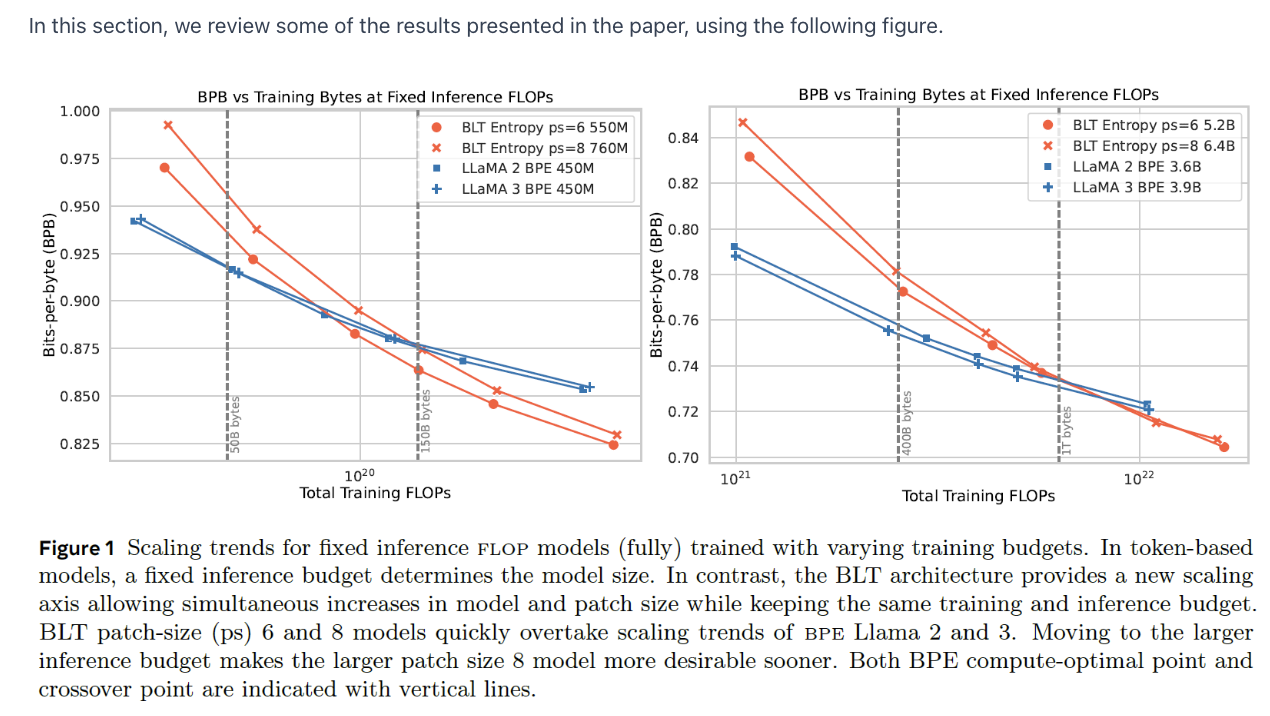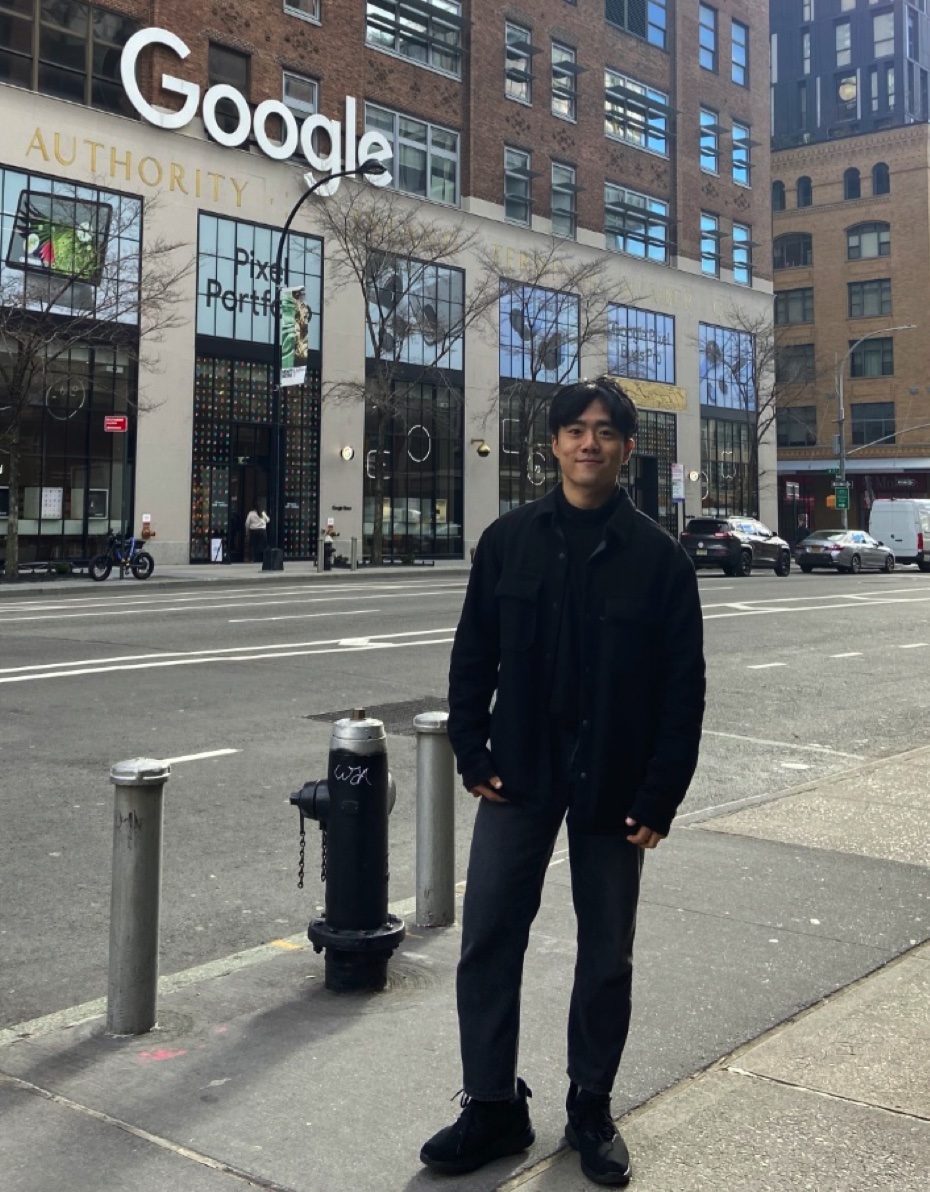Byte Latent Transformer: Patches Scale Better Than Tokens
Pagnoni, Artidoro, et al. "Byte Latent Transformer: Patches Scale Better Than Tokens." arXiv preprint arXiv:2412.09871 (2024).
참고:
- https://aipapersacademy.com/byte-latent-transformer/
- https://arxiv.org/pdf/2412.09871
Contents
- Introduction
- Recap: Byte into patches
- 4-Strided Approach
- Byte-Pair Encoding (BPE)
- Space Patching
- Entropy-based Patching
- BLT Architecture
- Local Encoder
- Latent Transformer
- Local Decoder
- Local Encoder & Local Decoder
- Local Encoder
- Local Decoder
1. Introduction
LLM = “tokenizer” before the Transformer
-
Role: Converts text into tokens
( = which are part of the vocabulary of the LLM )

Tokens are provided by an external component
\(\rightarrow\) The model cannot decide whether to allocate more compute to a certain token
( =All tokens are treated the same )
Problems?
- Some tokens are much harder to predict than others.
Byte Latent Transformer (BLT)
“Byte Latent Transformer: Patches Scale Better Than Tokens.”
Byte Latent Transformer (BLT)
-
Tokenizer-free architecture = Learns from raw byte data
-
Processing the sequence byte by byte results in very large sequences
\(\rightarrow\) Scaling issues ..? How to solve?
-
Solution: Dynamically groups bytes into patches
( & Performs most of its processing on these patches )
2. Recap: Byte into patches
Previous works) How to divide the Byte Sequence into Patches?
- Ex) “Daenerys Targaryen is in Game of Thrones, a fantasy epic by George R.R. Martin.”
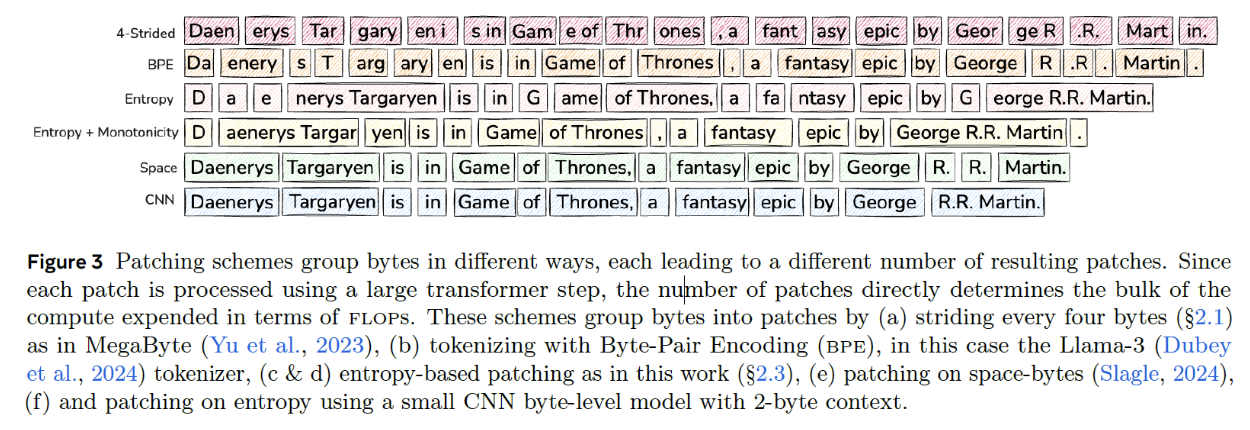
(a) 4-Strided Approach
Patch = Fixed size of 4 bytes
- Pros) Simplicity
- Cons)
- (1) Does not dynamically allocate compute where it is needed the most
- (2) Similar byte sequences may suffer from inconsistent patching
(b) Byte-Pair Encoding (BPE)
Patch = Subword tokenization
- Used in many LLMs (e.g., LLaMA 3)
(c) Space Patching
Patch = by space
- Start a new patch after any space-like byte
- Pros)
- (1) Consistent patching
- (2) Compute is allocated for every word
- Cons)
- (1) Does not fit all languages and domains, such as math.
- (2) Cannot vary patch size, as it is determined by the word’s length.
(d) Entropy-based Patching
Dynamic allocation of compute where it is needed the most
- Entropy = uncertainty
- Entropy is calculated over the prediction of the next byte
- Via a small byte-level language model trained for this purpose.
\(\rightarrow\) High uncertainty for predicting the next token = Good hint that the next byte is a hard one to predict

Entropy vs. Entropy + Monotonicity
Entropy: \(H\left(x_t\right)>\theta_g\)
- Setting a threshold for the entropy for predicting the next byte
Entropy + Monotnoicity: \(H\left(x_t\right)-H\left(x_{t-1}\right)>\theta_r\)
- Not the entropy value, but rather the difference between the entropy of predicting the next byte and the entropy for predicting the current byte
3. BLT Architecture
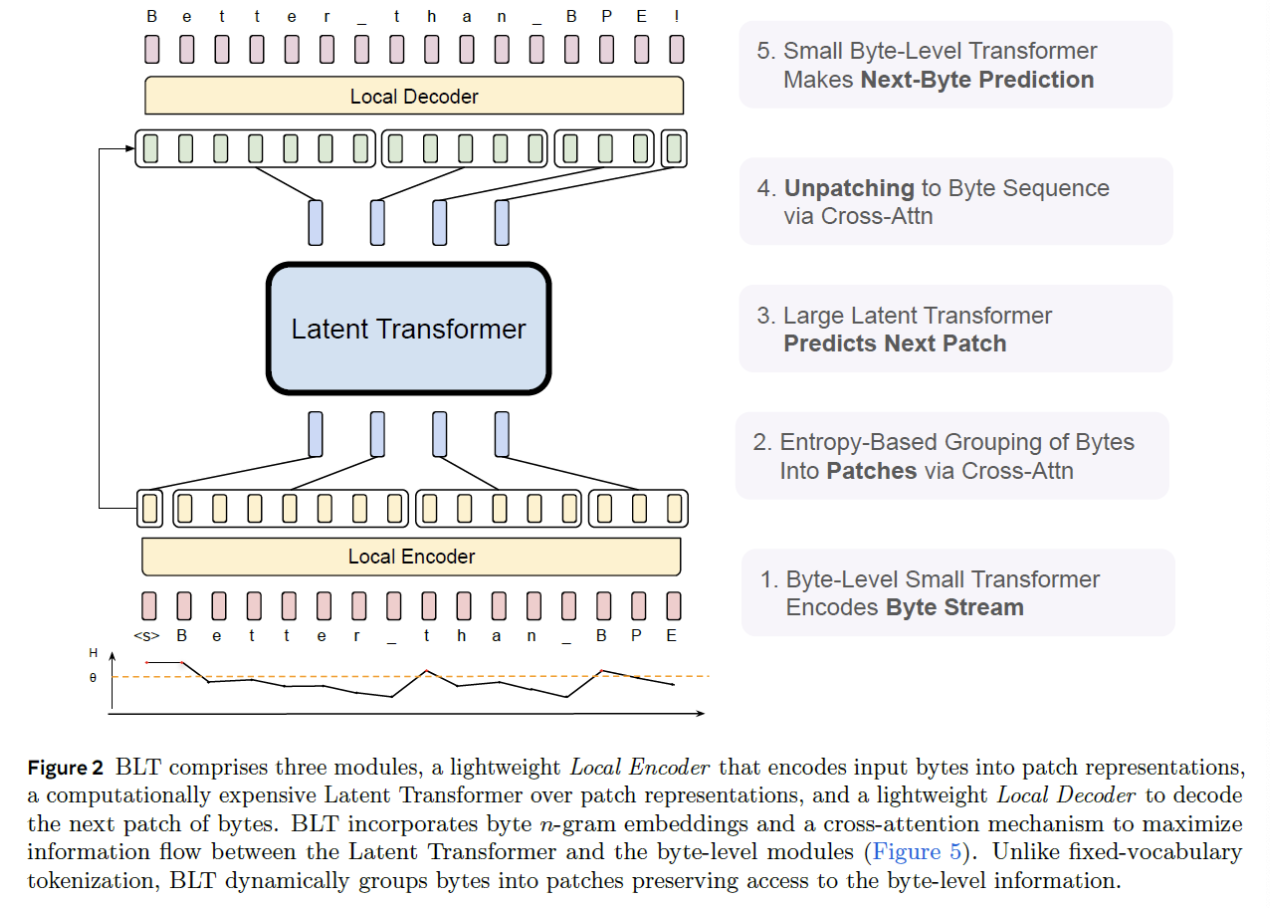
Three key modules
- (1) Local Encoder
- (2) Latent Transformer
- (3) Local Decoder
(1) Local Encoder
1-1) Input: Byte embedding
-
Combination of multiple n-gram embeddings
( to provide context about the preceding bytes )
- \(f(\text{byte1})\) (X)
- \(f(\text{byte1,2,..,n})\) (O)
1-2) Local Encoder
-
Encodes the input byte embeddings
(via Lightweight byte-level Transformer)
-
Responsible for creating the patch sequence
- (1) Patchify: based on the entropy method (Next Byte Prediction)
- (2) Patch embedding: Cross-attention btw
- (1) Byte sequence
- (2) Initial patch sequence.
(2) Latent Transformer
2-1) Input: Patch sequence
2-2) Transformer: Main component of BLT
- Processes the patches & provide output patch representations
(3) Local Decoder
3-1) Input: Patch sequence
3-2) Decoder:
- Unpatches the patch sequence \(\rightarrow\) To a byte sequence
-
How? via cross-attention with the output of the Local Encoder,
-
Architecture: Small byte-level Transformer
( used to predict the next byte )
4. Local Encoder & Local Decoder
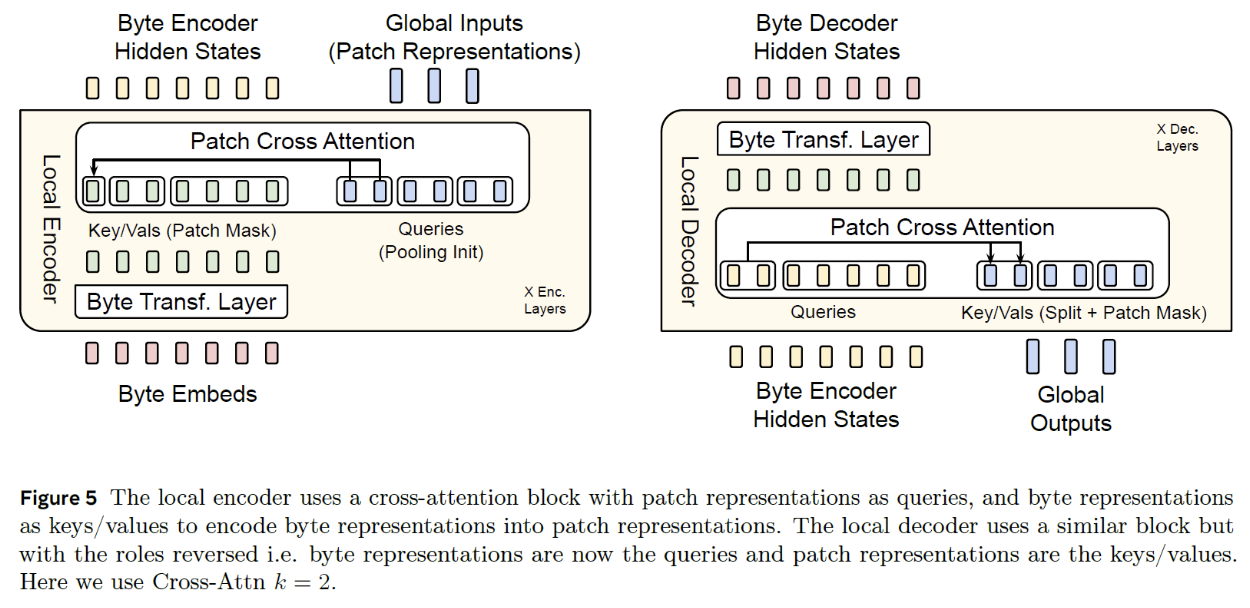
(1) Local Encoder
Inputs)
- (1) Byte Embeddings \(\rightarrow\) pass through Transformer (masked self-attention)
- (2) Initial patch sequence representations = by pooling (\(k=2\))
- Each patch gets two vectors for its representation
-
Patch Cross Attention
-
Q,K,V
- (K,V) = with (1)
- (Q) = with (2)
-
Masking (to attend only preceding bytes)
-
Byte embeddings can have context from previous patches
( \(\because\) n-gram embeddings & masked byte-level Transformer layer)
-
-
Output) Encoded bytes & Patch representation’s hidden states
(2) Local Decoder
Input)
- (1) Encoded bytes (from the Local Encoder)
- (2) Patch outputs (from the Latent Transformer)
Decoding = Inversion of the Local Encode.
